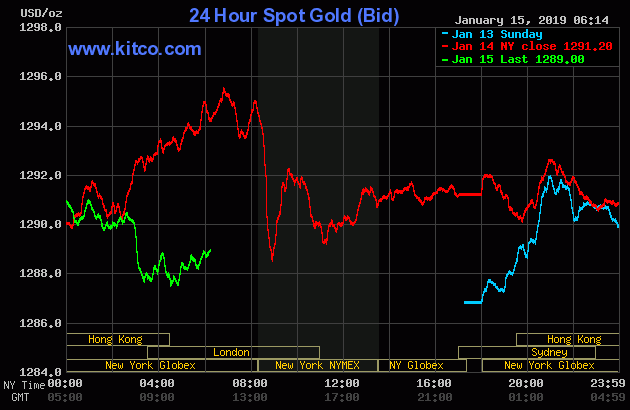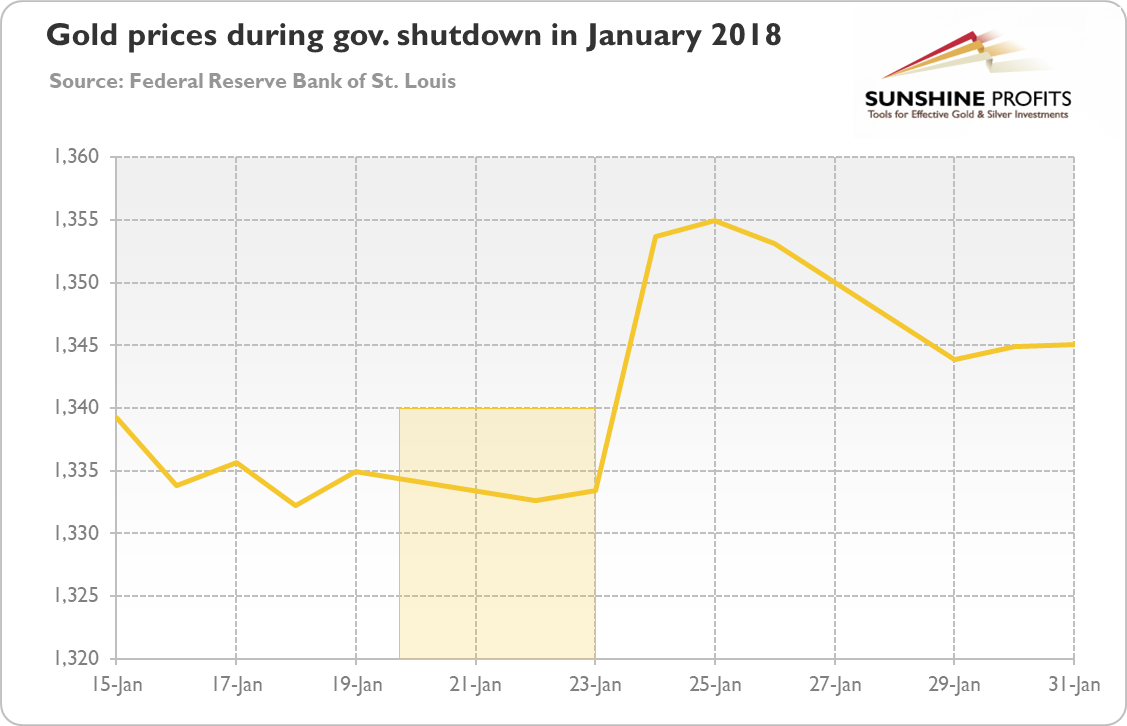Federal government shutdown drags into its fourth week. Will it boost gold prices?
US Government Shuts Down, Again
Could you imagine life without a government? Now, you can. The federal government has been shut down since December 22nd, 2018. The government shutdown does not, of course, imply that the whole government is closed. Only non-essential discretionary federal programs and agencies close. They include NASA, IRS, Department of Commerce, Department of Education, Department of Labor, Food and Drug Administration, etc.
The partial shutdown occurred because President Donald Trump and the United States did not agree on the appropriation of funds for the 2019 fiscal year. The bone of contention is Trump’s call for more than $5 billion for a U.S.-Mexico border wall. Democrats, who now control the House of Representatives, have rejected Trump’s demand, claiming that there are more effective ways of enhancing border security than building a wall costing more than $25 billion. They also point out that Trump promised during his campaign that Mexico would pay for the wall (however, its government has refused, what a surprise).
The shutdown of the US government is not something new. For example, it happened in January 2018 for three days, 2013 for 16 days in, or in 1995-1996 for 21 days. The current shutdown is the longest in the US history, lasting 25 days already.
Government Shutdown and US Economy
What the government shutdown imply for the US economy and the gold market? Well, it resulted in a lack of funding for nine executive departments, affecting about one-fourth of government activities with around 800,000 employees. Almost half of them have been furloughed, i.e. sent home without pay, while the rest of them have to work without a paycheck. More importantly, the shutdown also affects the pace of economic growth, as the government spending is a component of GDP. Indeed, the shutdown in 2013 reduced the GDP by 0.4 percent in the fourth quarter of 2013. On that basis, the J.P. Morgan economists have cut their first-quarter growth forecast by a quarter point to 2 percent. Gold should enjoy the economic slowdown.
And, according to the S&P Global (NYSE:SPGI) Ratings, the shutdown imply a decrease in sales for contractors to the government, delays in federal loans, and reduced consumer spending and lost productivity by furloughed workers. Hence, the company estimate costs of shutdown at $1.2 billion for every week the government is closed. We are a bit skeptical, but if true, the cost of the shutdown will exceed soon the $5 billion Trump has demanded for the wall. Is that not funny?
Implications for Gold
So far, we have not seen any impressive rally in gold amid the US government shutdown. We mean that, of course, gold shined in January, but it still cannot cross the level of $1,300, as the chart below shows.
Chart 1: Gold prices from January 13 to January 15, 2019.
One can convincingly argue that the longer this shutdown lasts, the more collateral damage the economy will suffer, and the brighter gold will shine. However, this is not what history suggests. For example, the government shutdown in 2013 did not provide a boost for gold prices. Similarly, in January 2018, gold prices declined between January 20th and 23rd, and went up only when the shutdown ended, as one can see in the chart below.
Chart 2: Gold prices during government shutdown in January 20-23, 2018
Actually, the lack of meaningless gold’s reaction is quite understandable. The government shutdown is not a big deal, as government still provides essential services. And the shutdown will eventually be resolved. Come on, do you really think that the US economy will collapse because the Smithsonian museums and the National Zoo are closed? Hence, any potential impact on gold should be limited and short-term. Unless, of course, there is a protracted shutdown… Anyway, the nearest days may be quite hot for the gold market, as today there is a vote in British Parliament on May’s deal. Stay tuned!
Disclaimer: Please note that the aim of the above analysis is to discuss the likely long-term impact of the featured phenomenon on the price of gold and this analysis does not indicate (nor does it aim to do so) whether gold is likely to move higher or lower in the short- or medium term. In order to determine the latter, many additional factors need to be considered (i.e. sentiment, chart patterns, cycles, indicators, ratios, self-similar patterns and more) and we are taking them into account (and discussing the short- and medium-term outlook) in our trading alerts.


